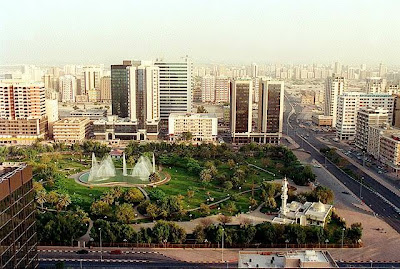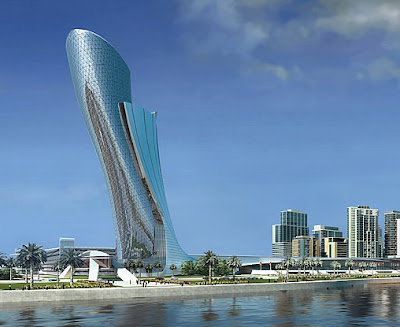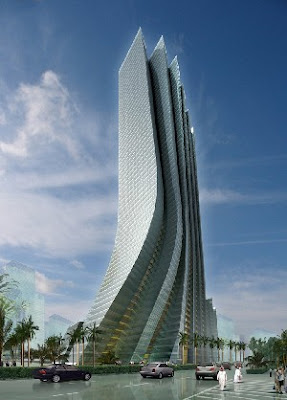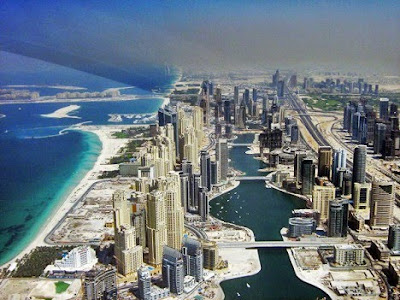
Abu Dhabi - the capital city - lies among the lifeless sand and parched rivers on the Persian Gulf. This is the largest and richest cities in the UAE.
'The showcase' of the half million of the city, the capital of the state, serves as a quay, that consists of gleaming skyscrapers. In Abu Dhabi there are enough attractions, one of the most interesting - Oil Show, where audiovisual describes the city's development. Here is the Abu Dhabi Corniche - a specially reconstructed shipyard, where produced Arab dhow. The city's largest and most populous of the emirates, it is called the "garden city bay - here as much man-made gardens and parks, based on the irrigation of each tree and bush (used for irrigation, desalination plants). In this sense it is comparable only with Al-Ain. Zeid Port is the gateway to the sea, as well as Rashid in Dubai and Mina Khalid in Sharjah. There is, of course, and an international airport. However, its role as the main oil-producing state of the city, Abu Dhabi is not a major center of recreation or cheap trade.
In Abu Dhabi, called the Manhattan of the Middle East. Per fectly straight streets of the city form a network with six major highways. The most spectacular buildings are clustered along the coastline or are on parallel streets: Sheikh Khalifa, (Sheikh Khallf), Sheikh Hamdan (Sheikh Hamdan) and Sheikh Zayed (Sheikh Zayed). Features that distinguish Abu Dhabi from any other modern city, and which reflects its Muslim character - is a large number of mosques in the city and its environs. Everywhere in the town you can see several intricately decorated minarets. Visitor affects the abundance of greenery in Abu Dh
fectly straight streets of the city form a network with six major highways. The most spectacular buildings are clustered along the coastline or are on parallel streets: Sheikh Khalifa, (Sheikh Khallf), Sheikh Hamdan (Sheikh Hamdan) and Sheikh Zayed (Sheikh Zayed). Features that distinguish Abu Dhabi from any other modern city, and which reflects its Muslim character - is a large number of mosques in the city and its environs. Everywhere in the town you can see several intricately decorated minarets. Visitor affects the abundance of greenery in Abu Dh abi. Along the main road into the city and the entire waterfront stretch line planting hide arid soil, growing eucalyptus and palm trees. There are a lot of grassy lawns, ornamental shrubs. In the evening you should definitely take a walk along the waterfront and delight your eyes playing water jets in fountains, with fanciful names - "Dalla", "Pearls," "The Flying Swans".
abi. Along the main road into the city and the entire waterfront stretch line planting hide arid soil, growing eucalyptus and palm trees. There are a lot of grassy lawns, ornamental shrubs. In the evening you should definitely take a walk along the waterfront and delight your eyes playing water jets in fountains, with fanciful names - "Dalla", "Pearls," "The Flying Swans".
Abu Dhabi was founded in 1760. On the basis of the capital of the UAE there is a beautiful legend. Arabs-hunters from one of the oases chased gazelle. Gazelle long wound in the desert, and then withdrew the hunters on the shore of the Persian Gulf, where the water rushed in and proceeded to wade to the island. The hunters followed, and the gazelle brought them to power with a beautiful fresh water. In gratitude, the hunters gave gazelle life, and is based near the source of the settlement was called "the father of a gazelle," which in Arabic sounds like Abu Dhabi.
'The showcase' of the half million of the city, the capital of the state, serves as a quay, that consists of gleaming skyscrapers. In Abu Dhabi there are enough attractions, one of the most interesting - Oil Show, where audiovisual describes the city's development. Here is the Abu Dhabi Corniche - a specially reconstructed shipyard, where produced Arab dhow. The city's largest and most populous of the emirates, it is called the "garden city bay - here as much man-made gardens and parks, based on the irrigation of each tree and bush (used for irrigation, desalination plants). In this sense it is comparable only with Al-Ain. Zeid Port is the gateway to the sea, as well as Rashid in Dubai and Mina Khalid in Sharjah. There is, of course, and an international airport. However, its role as the main oil-producing state of the city, Abu Dhabi is not a major center of recreation or cheap trade.
In Abu Dhabi, called the Manhattan of the Middle East. Per
 fectly straight streets of the city form a network with six major highways. The most spectacular buildings are clustered along the coastline or are on parallel streets: Sheikh Khalifa, (Sheikh Khallf), Sheikh Hamdan (Sheikh Hamdan) and Sheikh Zayed (Sheikh Zayed). Features that distinguish Abu Dhabi from any other modern city, and which reflects its Muslim character - is a large number of mosques in the city and its environs. Everywhere in the town you can see several intricately decorated minarets. Visitor affects the abundance of greenery in Abu Dh
fectly straight streets of the city form a network with six major highways. The most spectacular buildings are clustered along the coastline or are on parallel streets: Sheikh Khalifa, (Sheikh Khallf), Sheikh Hamdan (Sheikh Hamdan) and Sheikh Zayed (Sheikh Zayed). Features that distinguish Abu Dhabi from any other modern city, and which reflects its Muslim character - is a large number of mosques in the city and its environs. Everywhere in the town you can see several intricately decorated minarets. Visitor affects the abundance of greenery in Abu Dh abi. Along the main road into the city and the entire waterfront stretch line planting hide arid soil, growing eucalyptus and palm trees. There are a lot of grassy lawns, ornamental shrubs. In the evening you should definitely take a walk along the waterfront and delight your eyes playing water jets in fountains, with fanciful names - "Dalla", "Pearls," "The Flying Swans".
abi. Along the main road into the city and the entire waterfront stretch line planting hide arid soil, growing eucalyptus and palm trees. There are a lot of grassy lawns, ornamental shrubs. In the evening you should definitely take a walk along the waterfront and delight your eyes playing water jets in fountains, with fanciful names - "Dalla", "Pearls," "The Flying Swans".Abu Dhabi was founded in 1760. On the basis of the capital of the UAE there is a beautiful legend. Arabs-hunters from one of the oases chased gazelle. Gazelle long wound in the desert, and then withdrew the hunters on the shore of the Persian Gulf, where the water rushed in and proceeded to wade to the island. The hunters followed, and the gazelle brought them to power with a beautiful fresh water. In gratitude, the hunters gave gazelle life, and is based near the source of the settlement was called "the father of a gazelle," which in Arabic sounds like Abu Dhabi.




